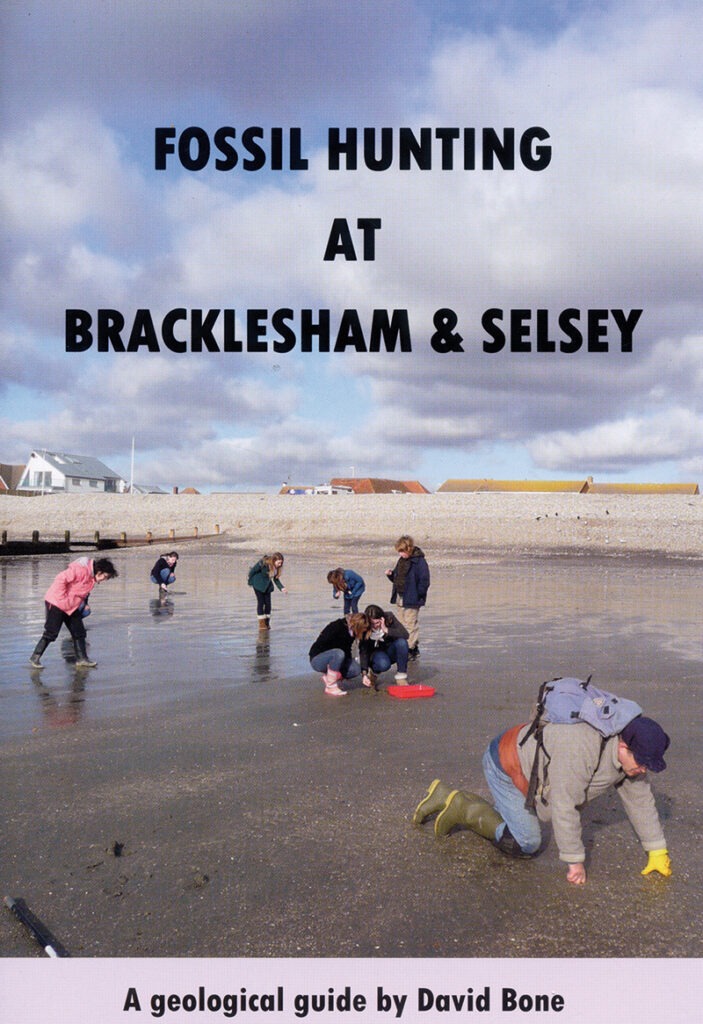Fossil Hunting at Bracklesham and Selsey
David Bone
This book review was written by the author, David Bone.

Frederick Dixon, medical doctor and local geologist, wrote about Bracklesham Bay in 1850 saying that:
“I have been greatly disappointed [owing to] sand, sometimes two to three feet in thickness, or the tide not leaving the shore sufficiently exposed; so that a stranger might conclude that there were no fossils to be procured at Bracklesham.”
Even today, this accurately describes the situation experienced by hundreds of visitors each year to this geological Site of Special Scientific Interest in West Sussex. There are no cliffs here and the Eocene fossil-bearing beds lie beneath the sand for much of the time. Fortunately, if you know where and when to look, offshore erosion provides an almost continuous supply of fossil material that gets swept in on the tide by the prevailing south-westerly winds.
I am a local geology enthusiast and have been leading fossil hunts at Bracklesham for over 30 years. I recently decided that it was time to write a new guide aimed at visitors who, more often than not, will be faced with a uniform blanket of beach sand and need some idea of where to start.
The ‘Bracklesham Beds’ are a series of predominantly soft silty sands and clayey silts laid down in a sub-tropical shallow marine environment around 46Ma. Fossils are readily eroded and can be found loose on the beach along with modern sea shells. The guide has simple maps to direct fossil hunters to the best areas for surface-picking and likely exposures when the beach sand has been removed. Gastropod and bivalve shells make up the most of the fossils, but occasional terrestrial remains, including seeds and fruits, suggest that land was not too far distant.
Most collectors visit Bracklesham for the fossil sharks’ teeth and some hints on how to find these and other vertebrate remains (such as rays, snakes, turtles and crocodiles) are provided. One local collector will routinely gather up to 150 sharks’ teeth on a good day, so there is usually something for everybody to find on a fossil hunt. Fossil corals are an additional bonus when one of the more distant fossil beds is exposed.
I have also included simple maps, full colour photographs and text written for the non-expert to make this publication an easily accessible guide, not only to the ‘Bracklesham Beds’, but also the channel infills of Pleistocene and recent date that cut the foreshore. Although mammoth teeth and bones are rare finds, Bronze Age animal bones add an interesting extra dimension to the range of fossils that can be found. Bracklesham Bay is an ideal site for families with young children as it is safe and only the weather can turn a visit into a total disappointment. This guide will, I hope, help you get the most out of your visit.
Fossil Hunting at Bracklesham and Selsey, by David Bone, by Limanda Publishing, West Sussex (paperback), ISBN: 9780956201805